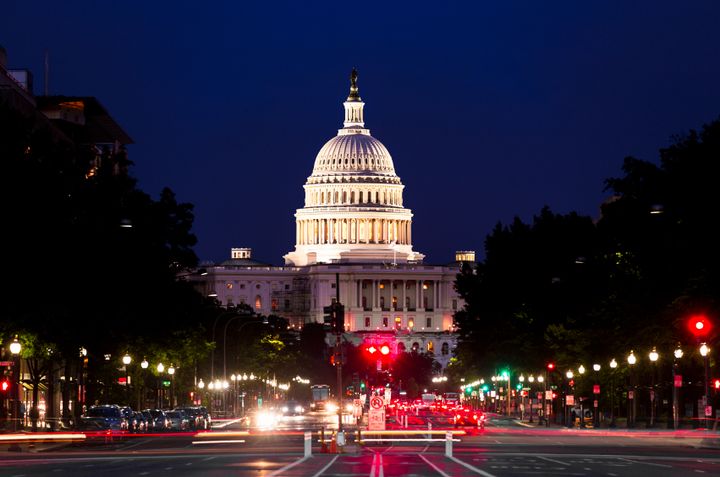
As many analysts had already anticipated over the prior months, the Federal Open Market Committee has risen rates, changing its target from a range of 0.25 percent - 0.5 percent to 0.5 percent - 0.75 percent.
Should this rise be a cause for alarm for consumers?
In short, no. As I mentioned earlier, analysts and lenders have anticipated this rate hike to occur for some time. Therefore, the market has already been slowly adjusting borrowing rates for the past few months.
On the LendingTree network, mortgage rates offered to borrowers have been increasing steadily over the past few months. On the week ending December 3rd, the average offered 30-year fixed mortgage interest rate was 4.34 percent. For the week prior, ending November 26th, the average was 4.31 percent, and seven days before that the average was 4.22 percent.
From this trend we see lenders have effectively factored in this rate hike into their loan pricing well in advance of the Fed’s announcement. The good news for consumers is we will unlikely see any dramatic changes from where rates are today, at least in the short term.
Rate increase decisions are responsive, made when the FOMC has evidence the economy and consumers are able to withstand higher borrowing costs. With recent unemployment rates at a nine-year low of 4.6%, and one of the highest readings of ISM’s non-manufacturing activity index in over a year (57.2), these key market indicators illustrate an improving American economy. As the economy further strengthens, the short-term effects of the hike will be counteracted by greater job opportunities, higher incomes and greater returns on savings accounts.
These are all signs that most consumers have little to fear regarding the Fed’s decision.
Remember rates are still historically relatively low
If you’re currently on the fence about considering a new home due to possible changing market effects, consider the new home if it financially makes sense. While you might not be getting the lowest rates that have been available, rates are still historically relatively low even with the recent hike. This makes it easier for you to afford more home for your money.
For those actively in the market for a new mortgage, consider locking in your interest rate sooner rather than later. While lender rates will not have significant increases now, the market may still see marginal increases over the next few weeks as it responds to the Fed hike. Wait too long, and you may have to pay higher monthly payments on your choice of home. Over the next few months, you probably will not see any measurable drop to mortgage rates that would outweigh the risk of rates possibly rising. Don’t hedge on floating your rate offers.
Refinance if you haven’t already
Higher interest rates generally lead to short-term drops in mortgage originations but demand will stabilize and increase over time as the economy adapts and continues growing. When rates rise, refinance originations may see a decrease over time as consumers find fewer rates that beat their existing loan agreements. For lenders, this will be offset by higher returns on future mortgage applications and other financial products including credit cards and auto loans.
As rates rise, fewer homeowners may find value in refinancing their loans. But for those homeowners who still have not taken advantage of historically low rates, it’s is not too late. If you are still paying 5 or 6 percent interest on your mortgage, you should still consider refinancing this year before rates go even higher as it could save you thousands in the long-term.
The average U.S. loan amount is $237,456 for a 30-year fixed. If your loan was still at 5.31 percent (about 1% higher than current rates), monthly payments on that loan would be $1,321 per month or $15,852 per year, with a total loan cost of $475,560. Refinancing that to a 4.31% would lower monthly payments to $1,183.30 or $138 monthly savings. The total annual cost would be $1,652 less per year, and you would save $49,572 over the life of the loan.
Millennials will drive the housing market and higher future rates
Older millennials who are readily becoming first-time homebuyers will be a significant driving factor to the near-future economy and housing market. As more Millennials enter their late 20s and early 30s, expect their demand for housing to increase, which will, in turn, raise prices and indicate to the Fed that the market can withstand additional rate increases. The perception that Millennials are uninterested in becoming homeowners is a misconception according to the results of a recent LendingTree survey. There has long been pent-up demand from the younger generation to purchase their first home, but many have felt financially unable to do so.
With an improving economy we’ll see more of this generation enter stable careers. With steady income, more Millennials will be able to make measurable strides towards paying off their student loans, eventually freeing cash to allow them to enter the housing market as first-time homebuyers.
Millennials represent a significant consumer population, with their numbers actually exceeding the number of Baby Boomers. If markets remain stable, expect the increase of first-time homebuyers to be an economic indicator that could lead to further future rate increases.
Doug Lebda is the Founder, Chairman and CEO of LendingTree, a loan marketplace where consumers can shop and compare financial products. Twitter: @Doug Lebda
